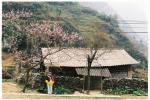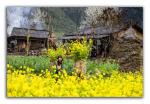When travelers mention the Ha Giang Loop in northern Vietnam, one destination that always captures attention is the Nho Que River. Winding through majestic limestone mountains and deep valleys, this emerald-green river has become a symbol of Ha Giang’s natural beauty. For adventurers, photographers, and culture lovers, the Nho Que River is more than just a scenic spot - it is the heart of the Dong Van Karst Plateau Geopark. In this article, we will explore the history, charm, and travel experiences that make the Nho Que River a must-visit destination.
Recommended Tours for You:
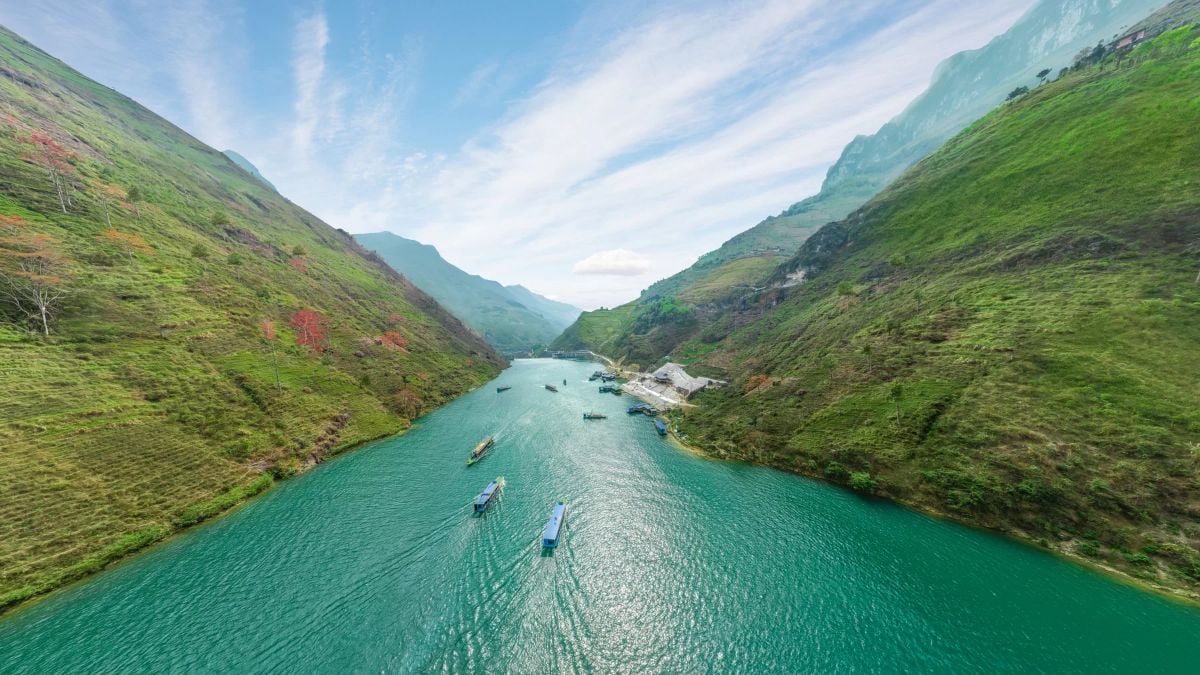
Where is the Nho Que River?
The Nho Que River originates from Yunnan province in China, flowing into Vietnam through Lung Cu, Dong Van, and Meo Vac districts before merging with the Gam River in Cao Bang province. Its length is about 192 kilometers, with nearly 47 kilometers flowing through Vietnamese territory.
The most famous section of the river lies beneath the Ma Pi Leng Pass, where the water carves its way through towering limestone cliffs, forming one of the deepest gorges in Southeast Asia. This breathtaking view has made the Nho Que River a highlight of the Ha Giang Loop.
The Beauty and Significance of Nho Que River
-
Natural Wonder: The river is famous for its striking jade-green color, contrasting beautifully with the grey limestone mountains.
-
Historical Value: In the past, the river was an important transportation route for ethnic minorities, linking villages and supporting agriculture.
-
Cultural Symbol: The river is deeply tied to the lives of local ethnic groups like the Hmong, Tay, and Dao, who rely on it for farming and fishing.
-
UNESCO Recognition: Located within the Dong Van Karst Plateau Geopark, the Nho Que River area is recognized for its geological, cultural, and ecological importance.
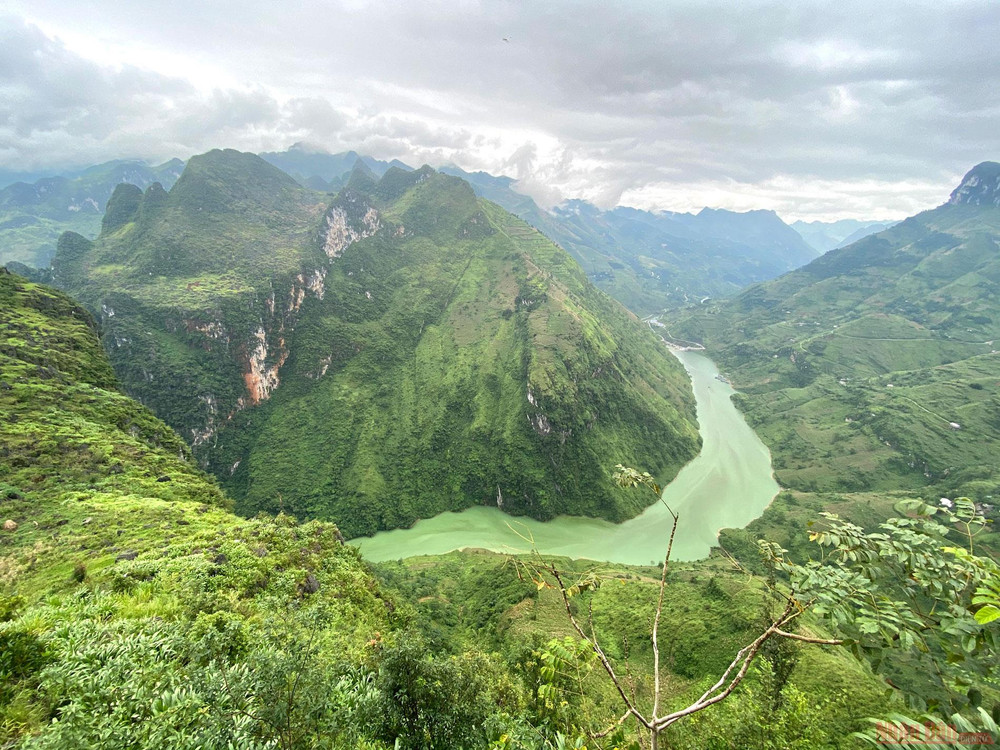
Best Experiences on the Nho Que River
1. Take a Boat Trip
One of the most popular activities is a boat trip on the Nho Que River. Starting from Ta Lang or Xin Cai village, wooden boats and kayaks take visitors along the emerald waters, offering unique perspectives of the canyon and cliffs above. The trip usually lasts 1–2 hours, and the calm water makes it safe and enjoyable.
2. View from Ma Pi Leng Pass
The iconic image of the Nho Que River winding beneath Ma Pi Leng Pass is a highlight for every traveler. From above, the river looks like a jade ribbon running through rugged mountains—one of the most photogenic landscapes in Vietnam.
3. Kayaking Adventure
For those who love adventure, kayaking on the Nho Que River is a thrilling experience. Paddling through narrow gorges while surrounded by cliffs reaching hundreds of meters high gives travelers a new appreciation for nature’s power.

4. Photography Paradise
Sunrise and sunset are the best times to capture the magic of the river. The combination of sunlight, mist, and emerald water creates breathtaking scenes.
5. Local Culture
Along the river, you can meet Hmong and Tay people living in traditional stilt houses. Many offer homestays where visitors can experience authentic local life.
Best Time to Visit Nho Que River
The Nho Que River can be visited year-round, but the most beautiful time is from September to November and March to May:
-
Autumn (Sept – Nov): Clear skies, cool weather, and the surrounding mountains covered with buckwheat flowers.
-
Spring (Mar – May): Peach and plum blossoms color the cliffs, creating a romantic scene.
Avoid the heavy rainy season (June – August), as landslides and slippery roads may occur.
How to Get to Nho Que River
-
From Hanoi to Ha Giang City:
-
Bus: Overnight sleeper buses take 6–8 hours.
-
Motorbike: For adventurers, the 300 km ride is an unforgettable journey.
-
-
From Ha Giang City to Nho Que River:
-
Follow National Highway 4C toward Dong Van and Meo Vac.
-
The river lies beneath Ma Pi Leng Pass, about 150 km from Ha Giang city.
-
Travelers can reach the boat dock at Ta Lang or Xin Cai village to begin a river tour.
-

Travel Tips for Visiting Nho Que River
-
Bring warm clothes: Even in summer, mornings and evenings can be chilly.
-
Wear comfortable shoes: For hiking down to the river.
-
Book boat trips in advance during peak season.
-
Respect local culture: Ask permission before taking photos of villagers.
-
Travel with a guide if you are not confident in navigating the steep Ha Giang roads.
Nearby Attractions
While exploring the Nho Que River, don’t miss these Ha Giang highlights:
-
Ma Pi Leng Pass – Vietnam’s most spectacular mountain pass.
-
Dong Van Old Quarter – A historic town blending Hmong and French architecture.
-
Lung Cu Flag Tower – The northernmost point of Vietnam.
-
Sung La Valley – Famous for buckwheat flowers and traditional houses.
-
Vuong Palace (Hmong King’s Palace) – A cultural heritage site rich in history.
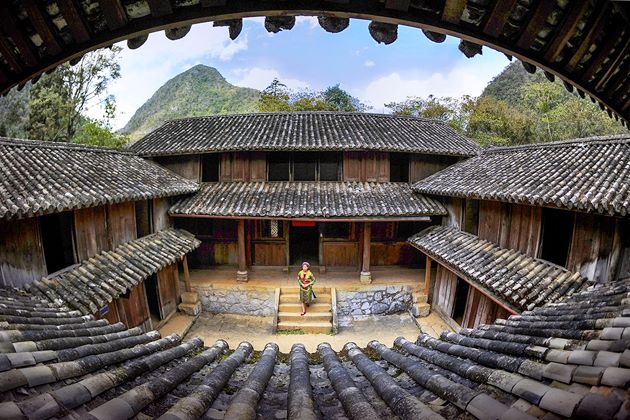
Conclusion
The Nho Que River is more than a natural attraction—it is the soul of Ha Giang’s majestic landscape. With its emerald waters, cultural significance, and breathtaking canyons, the river offers travelers unforgettable experiences. Whether you take a boat trip, admire the view from Ma Pi Leng Pass, or immerse yourself in local culture, a journey to the Nho Que River is a highlight of the Ha Giang Loop.
If you are planning a trip to northern Vietnam, make sure the Nho Que River is on your itinerary—it is a once-in-a-lifetime experience you should not miss. For more details and personalized support, contact Thelooptours Hotline: +84329196074.




